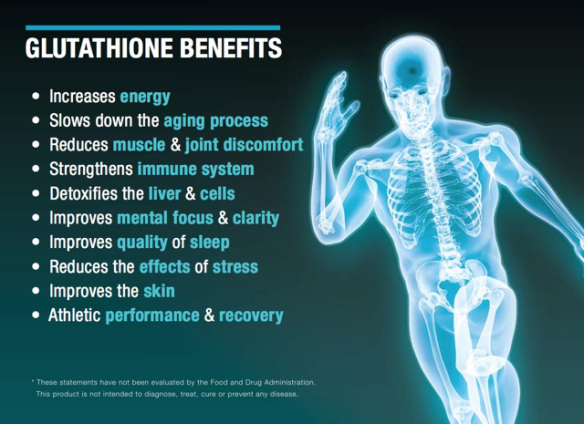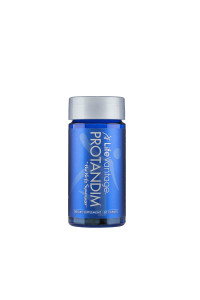Let’s Not Let Cataracts Impair Our Vision
Cataracts
Cataracts are the clouding of the lens in the eye that affects vision. It is the leading cause of blindness in the U.S.
I went to PubMed, where there are 145 studies showing oxidative stress (free radical damage), in its many forms, as being the major underlying cause of cataract formation.
Here are quotations from two of these studies:
“Our observations lead to the hypothesis that higher systemic oxidative stress increases the risk of developing age-related cataract". - Are Increased Levels of Systemic Oxidative Stress and Inflammation Associated with Age-Related Cataract?
“Cell damage caused by free radicals appears to be a major contributor in aging and degenerative diseases of aging such as cancer, cardiovascular disease, cataracts, compromised immune system, rheumatoid arthritis and brain dysfunction.” - Antioxidant Status and Oxidative Stress in the Circulation of Younger and Elderly Human Subjects.
What Causes Cataracts?
“Free radicals attack the structural proteins, enzymes and cell membranes of the lens. The free radicals in our food, water (fluoridated and chlorinated) and environment are probably a major factor in the increasing numbers of cataracts in our population.” - Prescription for Natural Healing, Phyllis A Balch, CNC and James F Balch, M.D. p. 360.
They also said that “”Cadmium, for instance, is found at levels two or three times higher than normal in lenses with cataracts. Concentrations of other metals, such as cobalt, nickel, iridium and bromine also are elevated.” p. 361
Free radicals are acidic toxins. When we slice an apple and see it turn brown after a while, we are seeing oxidation (rusting) occur. This oxidative stress, in our insides, is us, rusting from the inside out.

Microwave radiation causes cataract formation. It makes your food more acidic (toxic).
Iodine deficiency and cigarette smoking are cataract risk factors.
Some drugs can induce cataract development, such as corticosteroids and Seroquel.
Not enough potassium, too much salt. This imbalance affects the ability of the cells to absorb nutrients and release waste, via their sodium/potassium pumps.
Much of this information came from the Naturopathic approach as described in her book: How To Return Beauty And Clear Vision Back To Your Eyes - by Jane Kabarguina
Low-Quality Carbs
People who eat a lot of high-glycemic foods have an increased risk of developing cataracts. This is because a rapid, steep, and unhealthy rise in blood-sugar levels occurs as high-glycemic carbs are quickly digested and absorbed by the body. These low-quality carbohydrates include candy, baked goods, sugary cereals, anything made with white flour (including white bread and regular pasta), white rice. sugar, honey, and other sweeteners, sodas and sugary drinks.
Lactose, which is milk sugar, is an even worse offender.The incidence of cataracts is substantially higher in people with diabetes, who have chronically elevated blood-sugar levels. Glucose from these carbs eventually moves from the blood into the eye, These high sugar concentrations in the eye’s lens accelerates protein damage (denaturation) and clumping, which contributes to cataract formation.
Denaturation is reversible. Fortunately, if and when the denaturing influence is removed, the proteins can regain their native state. All the information needed for proteins to assume their normal state is inscribed in the primary structure of the protein. The body does know how to heal itself. Thank goodness for that!
Since the toxins we eat are manifested in our bodies as diseases, including eyesight problems, once we stop abusing our bodies they will recover. When we stop polluting the body, again, the body knows how to heal itself.
 We can bypass junky, nutrient-poor carbs and replace them with high-quality carbohydrates like vegetables, fruits, beans, and whole grains. They are more tasty anyway.
We can bypass junky, nutrient-poor carbs and replace them with high-quality carbohydrates like vegetables, fruits, beans, and whole grains. They are more tasty anyway.
When I chew these foods until they are liquid they taste sweeter. One time I chewed some Wonder Bread until it was liquid and it tasted like dust! Dust, dirt? I couldn’t decide. I guess that, given that it is mostly highly refined white powder and synthetic vitamins and other assorted chemicals, what should I have expected?
Taking the Garbage Out
There was a time when I had too much cadmium in my body, as shown by hair analysis tests. It turned out the particular source of my exposure was cadmium yellow, green and cadmium red oil and acrylic paints. Fortunately, I knew someone with a frequency generator. This generator also had a wand that could measure frequencies emanating from different areas of the body and he discovered I had high levels in deposits of cadmium stored in my sternum (breastbone). I used my:
Tiny Portable Far Infrared Sauna
As the toxins were released, a blotchy, bloody rash appeared right in that spot over my sternum. Whoa! Must have been a lot stored there!
On the other hand, I was delighted to realize the cadmium was being released from my system! No wonder I had been so ill. Another hair analysis test showed that it was gone. Sometimes a rash shows that your body is purging itself of unwanted toxins and debris.
When you decide to take your garbage out, don’t worry if you see a little rash or some spots. They are only temporary. Better that, than having toxins damage your eyes, (or arteries, etc). I find using these saunas is the easiest and most relaxing way to remove all that damaging garbage. I use mine every day.

Cataract Prevention
Quit smoking.
Maintain a healthy weight.
Choose a healthy diet that includes plenty of fruits and vegetables. Fruits and vegetables have many proven health benefits and are a safe way to increase the amount of vitamins in your diet.
Nutrition, nutrition, nutrition. Elderly raw foodists found out that they treated their cataracts without even trying to treat them. This happened when they were treating much more serious illnesses like cancer or diabetes by eating food that was unadulterated, even by heat, and in its natural unpolluted state.
Jack LaLanne said this about food:
“If man makes it, I don’t eat it! You need to make good health a hobby. Would you get your dog up in the morning and give him a cup of coffee, a cigarette, and a doughnut? Well, how about human beings? They get up in the morning with a cup of coffee and a doughnut and they wonder why they are sick and tired and fat. Just ten seconds on the lips and a lifetime on the hips!”
I wouldn’t give my dog Fruit Loops either.
How Cataracts are Formed
“A lens “grows” a cataract for the same reason that arteries harden and bones become arthritic. They have been injured by acidic waste, and calcium bonds with the waste to prevent further injury to the cell. … The problem starts when excess blood sugar (from the overconsumption of refined carbohydrates) initiates a blast of insulin. The insulin converts the surplus sugar in the light-sensitive cells in the lens into less soluble sugars, such as sorbitol and fructose. These sharp crystalline sugars stick to the pits and holes made by acidic waste on the membrane surfaces of the protein molecules in the epithelial cells (in the lens of the eye). This creates a sticky surface that causes the protein molecules to stick together and harden, a condition called cross-linkage. The result is more insoluble protein in the lens. As the amount of insoluble protein increases, so does the len’s opacity, until finally the whole lens is cloudy.” The Acid-Alkaline Balance Diet, Felicia Drury Kliment, p. 160 – 161.
Click here to read "How to Create Cardiovascular Health"
This article describes the same process when it occurs in blood vessels.
Essentially Indispensable (And Not Only for Eyes)
Selenium, and zinc are crucial in maintaining eye health. Magnesium relaxes blood vessels and by dilating them, lowers blood pressure and improves blood flow to the eyes. High blood pressure in the eyes can lead to high internal eye pressure.
This is important for diabetics and glaucoma patients.
Omega 3 fatty acids (EFAs) protect the retinal photoreceptors (cells that allow vision to occur) in the eye.

Vital Vitamins
No one knows everything there is to know about the effects of individual nutrients, Right now, the only solid information we have supports eating a diet of leafy-green vegetables, and an abundance of other antioxidant-rich vegetables and fruits. This is because nutrients are best absorbed when combined the way nature made them in the right ratios of vitamins and minerals and in just the way our bodies have adapted to receive them over the millennia.
Please, keep in mind that the best way of consumption of the produce is to eat it in its raw condition.
Scientific research shows that our eyes need vitamins.
Vitamin A
How do you get enough vitamin A from foods? The best natural sources of carotenoids are fruits and vegetables, including carrots, spinach, kale, butternut squash, cantaloupe, mangoes, pumpkins and sweet potatoes. A couple of ¾ cup servings of these would be about right every day.
Vitamin A is needed by the retina in the form of light-absorbing molecule retinal. This molecule is essential for both vision under low light conditions and color vision, it also helps keep your eyes, skin and mucous membranes moist.
Vitamin A, coming from plant-based sources, are called carotenes, such as beta-carotene. and are converted in the body to retinal. (Most of the beta-carotenes in citrus is in the white pithy part right under the skin – moist, soft and mild inorganic, dry, tough and bitter in non-organic. Lately, I have been peeling my oranges with a potato peeler to get to the white pith easier. (I must admit, when I'm lazy, I just scrape it out with my teeth.) Some organic oranges have peels that are so mild that I eat the whole peel.)
Retinol, which is found in animal products, fish, liver, or whole milk is converted to retinal.
Lutein and Zeaxanthin
Lutein and zeaxanthin belong to a family of nutrients called carotenoids (along with their more popular sister carotenoid, beta-carotene). Lutein and zeaxanthin are the only carotenoids found in the lens of the eye. These foods are also effective in reducing macular degeneration.
Best Foods For Lutein And Zeaxanthin: Kale, spinach, Swiss chard, collard greens, turnip greens, dandelion greens, mustard greens, beet greens, radicchio, summer squash (all varieties), watercress, green peas, persimmons, winter squash (acorn, butternut, etc.), pumpkin, broccoli, brussels sprouts, lettuce (especially dark lettuces), asparagus, corn, green beans, okra, artichokes, green bell peppers.
Lutein is a crucial protector against macular degeneration and cataracts because it counteracts damage from ultraviolet light. It is found in green leafy vegetables such as spinach and kale. RDA for lutein is 4,000-8,000 μg/day.
-
¾ cup of kale = 18,000 μg/day, Powerful stuff!
-
¾ cup spinach is 12,198 μg/day, Popeye knew a thing or two.
-
¾ cup peas and zucchini = a little over 2,000 μg/day,
-
¾ cup Brussels sprouts, pistachios or broccoli = a little over 1000.μg/day
By the way, μg means micrograms. Also, just so you know, kale, spinach, broccoli and alfalfa sprouts are all over 40% protein. Meat is only 20 to 26% protein. Leafy greens are also loaded with calcium. Where do you think the cow gets hers?
B Vitamins
There is strong evidence that two of the B vitamins — riboflavin (vitamin B2) and niacin (vitamin B3) — may help prevent cataracts, and early research suggests that other B vitamins may also contribute to eye health.
Although these vitamins are not antioxidants, they provide some of the building blocks the body needs to make antioxidant compounds. So without enough riboflavin and niacin, the risk of cataracts increases. Indeed, several scientific studies have shown that people who eat a diet with plenty of foods rich in riboflavin and niacin can slash their risk of cataracts by about half compared with people who eat a diet with very little of those vitamins.
Best Foods For Riboflavin: Lean beef and lamb, venison, yogurt (fat-free, low-fat), milk (fat-free, 1% low-fat), mushrooms, almonds, eggs, spinach, coffee
Best Foods For Niacin: Tuna (canned, light), skinless chicken, lean beef and lamb, pork tenderloin, mackerel (not king), skinless turkey, wild salmon (fresh, canned), anchovies, kidney beans, peanuts and peanut butter, mushrooms, sunflower seeds and sunflower butter.
Vitamin E
This vitamin is a powerful antioxidant. Vitamin E deficiency causes neurological problems in the eyes and the whole body due to poor nerve conduction. It works with selenium (3 Brazil nuts a day) and glutathione to protect cell membranes.
Since it is important in the formation of red blood cells and helps the body to use vitamin K – deficiency can cause anemia. RDA for vitamin E is 15mg/day for adults. Best sources of vitamin E are nuts, seeds and vegetable oils. For example:
Wheat germ oil, 1 tablespoon = 100% RDA
Almonds, 1 ounce = 40% RDA
Sunflower seeds, 1 ounce = 30% RDA
Vitamin C
Vitamin C is the second most important antioxidant in the lens of the eye after glutathione.and is essential for our body. Being an anti-oxidant, as is vitamin E, it reduces the risk of cataracts and macular degeneration.
Vitamin C is easy to get through foods, as many fruits (especially citrus) and vegetables contain vitamin C. Good sources include: citrus fruits (lemons, limes, oranges), kiwi, dark leafy greens (kale, spinach), peppers (especially red bell peppers, which have among the highest per-serving vitamin C content), tomatoes, apples, asparagus, berries, broccoli, cabbage, melon (cantaloupe, honeydew, watermelon) and cauliflower.
By the way, bell peppers, spinach, apples, tomatoes and strawberries are the most highly sprayed produce so it’s best to, at least, get these ones organic. An antioxidant vegetable that is full of toxic pesticides might be lucky if it neutralizes itself, let alone you.
GLUTATHIONE
THE SUPER HERO OF ANTI-OXIDANTS
Dr. OZ has said that GLUTATHIONE is the most powerful Anti-Oxidant that you have never even heard of before. Dr. David Katz joined Dr. Oz on his show and said that unlike other antioxidants, Glutathione is made in your body. Another reason that Glutathione is the most important Antioxidant is because it is the one that your body relies on to defend itself against toxins.

HOW IT WORKS
Dr. Oz did a demonstration to explain how Glutathione works. In your body you have Glutathione and you, also, have normal cells and toxic cells. Toxic cells are your own cells that have been damaged by free radicals. The Glutathione removes the toxic cells if you have enough. If you do not have enough Glutathione, then the toxic cells are not removed from your body and you are not able to heal yourself. Your body can only help you recover if you help your body to do it by giving it what it needs.
Dr. Oz: How Do You Know If You Have Enough Glutathione?
Dr. Oz asked Dr Katz how we can tell if we have enough Glutathione. Katz said that if you have a chronic disease like Diabetes or Cancer, you probably have low levels of Glutathione and should have your Glutathione levels checked. If you are chronically fatigued, low levels of Glutathione could be the cause of this as well. Dr. David Katz said that when you give people Glutathione, amazing things can happen.
How To Increase Glutathione Levels
Glutathione is a large protein molecule that gets digested when taken orally and most of us are not going to take it intravenously, plus that is too expensive! Fortunately, you can use PROTANDIM to trigger your DNA to produce its own enzymes that increase your levels of Glutathione in your own body by 300%, which has been unheard of at these levels until now.
See THIS VIDEO to see why it is the most powerful activator of antioxidants enzymes in the world.
When I found out about it I decided to make it available HERE
because after I tried it myself, I noticed that it was turning my health right around. And not only me. Peer reviewed scientific studies confirms that it reduces oxidative stress (toxic, free radical damage) to the level of a 20-year old in 30 days and that it works 100% of the time in 100% of the people who use it everyday. Then blood tests cannot tell the difference between the level of a 20-year old and the level of an 80-year old. After 120 days, those levels are reduced to the levels of a baby. This was not possible before now. These levels indicate the amount of free radical accumulation you have. Setting the rate of cellular decay back to the level of babyhood, creates a level of purity that allows the body to finally be able to heal itself, just like it used to be so good at doing. A recent survey showed that 93% of the people who use it say they will continue as they are so delighted with the results.
You would have to eat 365 oranges or 11 lbs. of blueberries or 31 lbs. of strawberries a day to get the same amount of antioxidants that this provides! And how expensive would that be?
This new Nrf2 activator technology is making the anti-oxidant industry obsolete in the same way computers made typewriters obsolete and cell phones made beepers obsolete.
And this is why I want to share this, along with everything else I have been offering.
This is powerful protection as it is actually able to neutralize the underlying cause of cataracts.

A note to my readers: At this time Protandim is available in the United States, Japan, Hong Kong, Australia, Canada, Great Britain, the Phillipines and Mexico. Sorry, folks, I wish it was available everywhere but it will be.
